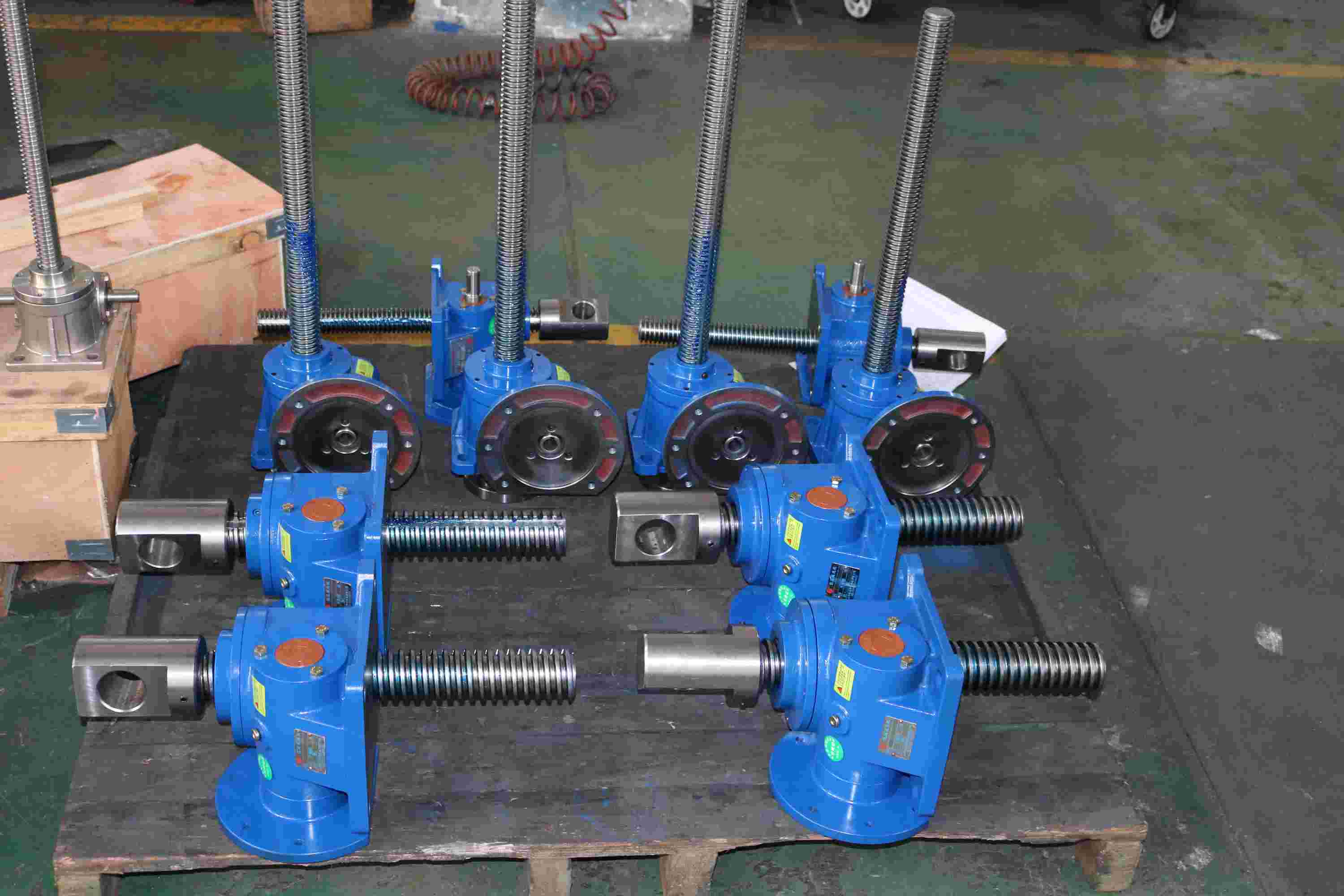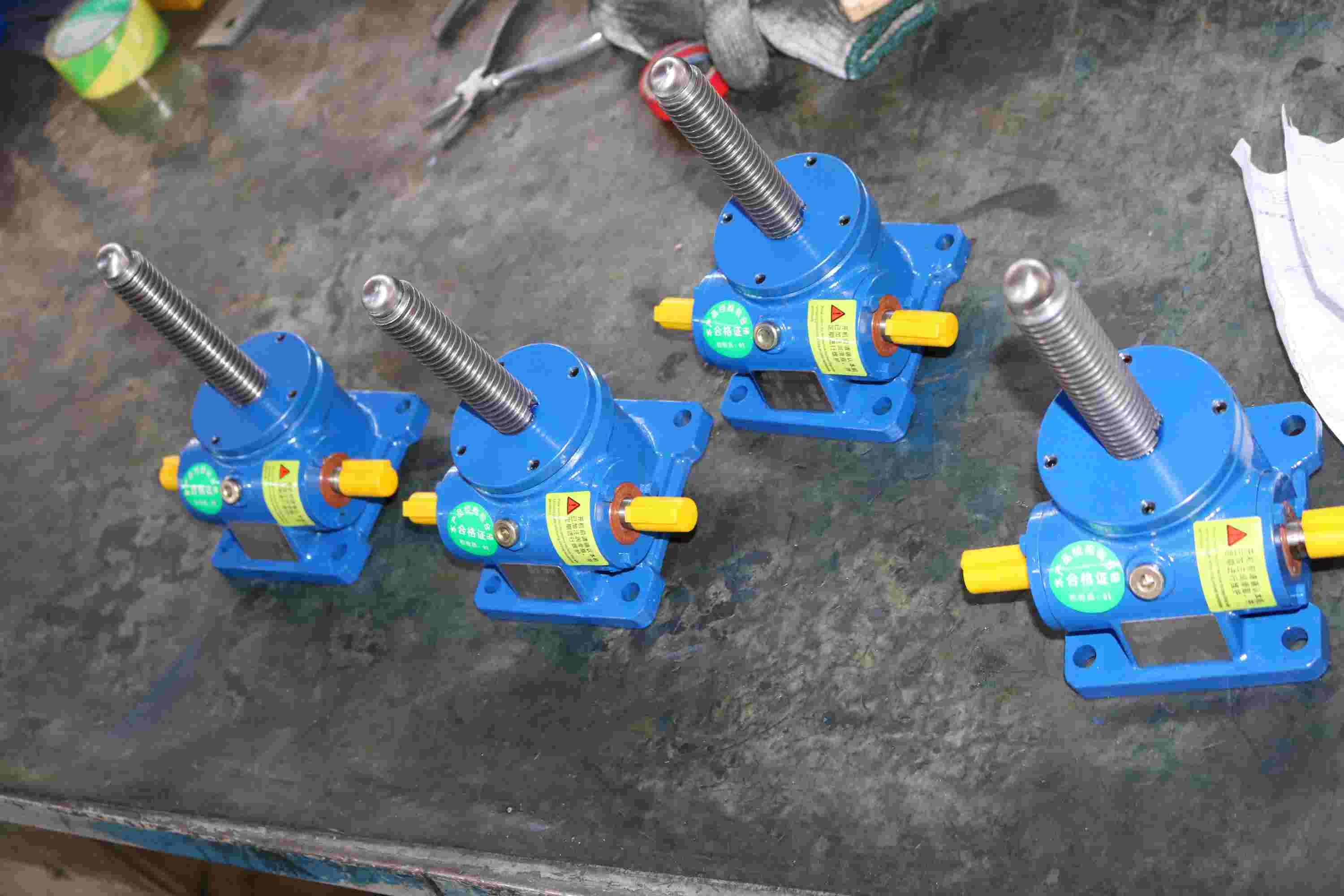introduction of screw jack's ratio
Jan 24 , 2025

The transmission ratio of a worm gear screw lift (often just called a worm gear) refers to the ratio between the number of turns the worm (the driving gear) makes for one complete revolution of the worm wheel (the driven gear). This ratio dictates how much mechanical advantage is gained through the system, and also influences the speed reduction and torque increase.
Factors Related to the Transmission Ratio:
-
Lead of the Worm:
-
The lead is the distance the nut (or worm wheel) moves along its axis per one complete revolution of the worm. It plays a direct role in the transmission ratio.
-
A higher lead results in a faster movement of the worm wheel, but with a higher mechanical advantage (lower ratio) as the gear ratio is influenced by how far the worm travels per turn.
-
Number of Teeth on the Worm Wheel:
-
The number of teeth on the worm wheel relative to the number of threads on the worm also affects the ratio.
-
In general, the more teeth on the worm wheel relative to the worm, the lower the transmission ratio.
-
Number of Threads on the Worm:
-
Worms can have one or more threads (called single-start or multi-start worms).
-
A multi-start worm will reduce the transmission ratio, as each turn of the worm moves the worm wheel by a larger distance.
-
Pitch of the Worm:
-
The pitch (distance between adjacent threads) also influences the ratio. A finer pitch (smaller thread spacing) typically results in a higher transmission ratio.
-
Friction and Efficiency:
-
Worm gears have a high frictional contact between the worm and the worm wheel, which can influence the effective transmission ratio, especially at higher loads.
-
Efficiency is typically lower in worm gears compared to other types of gears, which can cause some discrepancy between the theoretical and actual ratio.
How to Calculate the Transmission Ratio:
The transmission ratio can be calculated using the following formula:
Transmission Ratio=Number of Threads on the WormNumber of Teeth on the Worm Wheel=ZsZw
Where:
-
Zw = Number of teeth on the worm wheel.
-
Zs = Number of starts (threads) on the worm.
Example:
If the worm wheel has 40 teeth and the worm has a 2-start thread, the transmission ratio would be:
Transmission Ratio=240=20
This means for each full rotation of the worm, the worm wheel will turn 1/20th of a rotation.
Additional Considerations:
-
Self-locking feature: Worm gears often have a self-locking property, where the worm can drive the worm wheel but the worm wheel cannot drive the worm. This property comes into play in applications like screw lifts where load holding is important.


